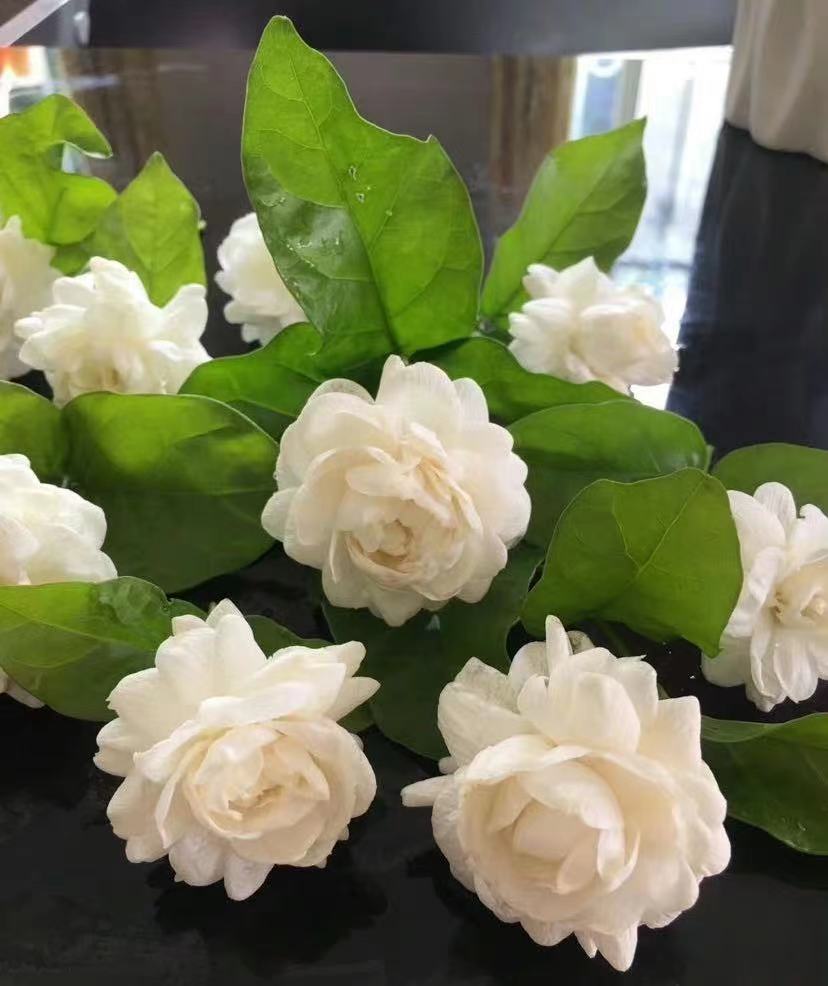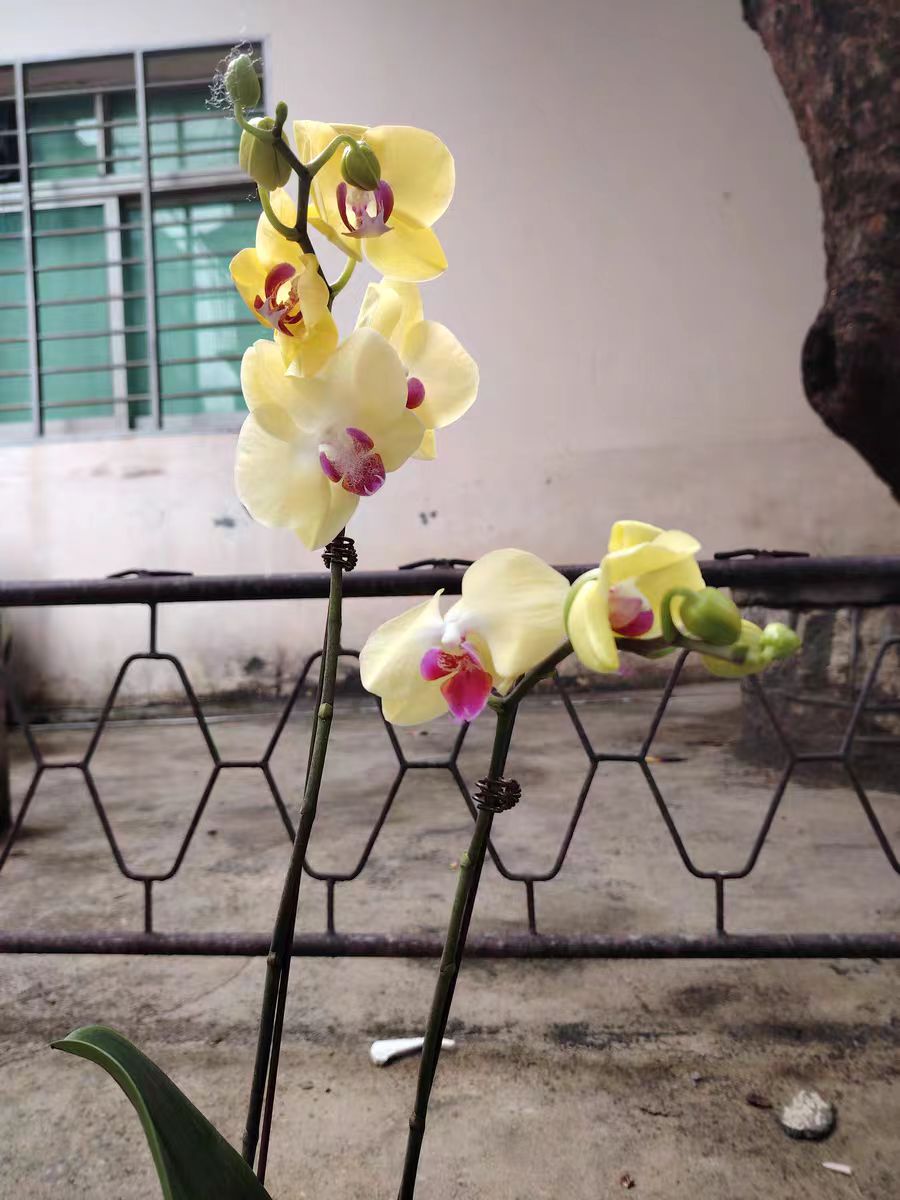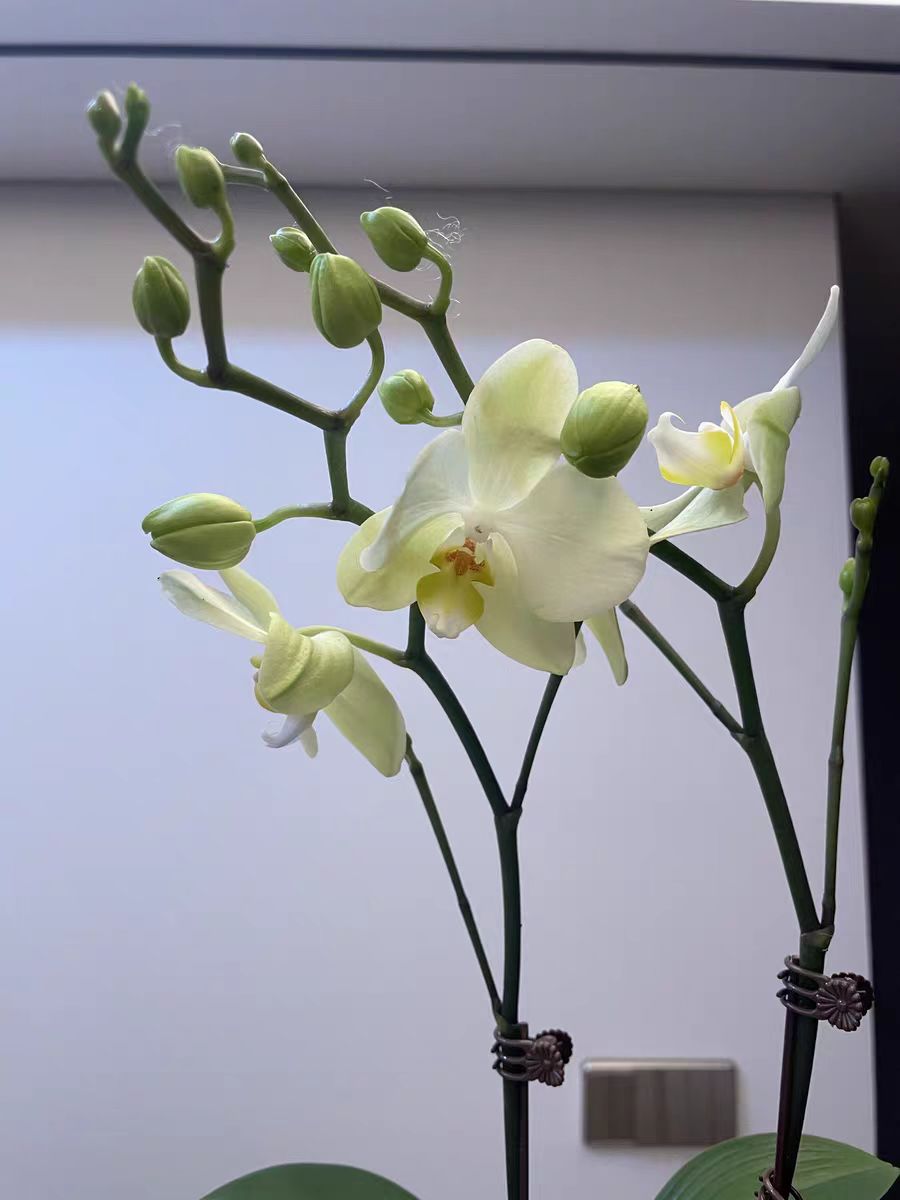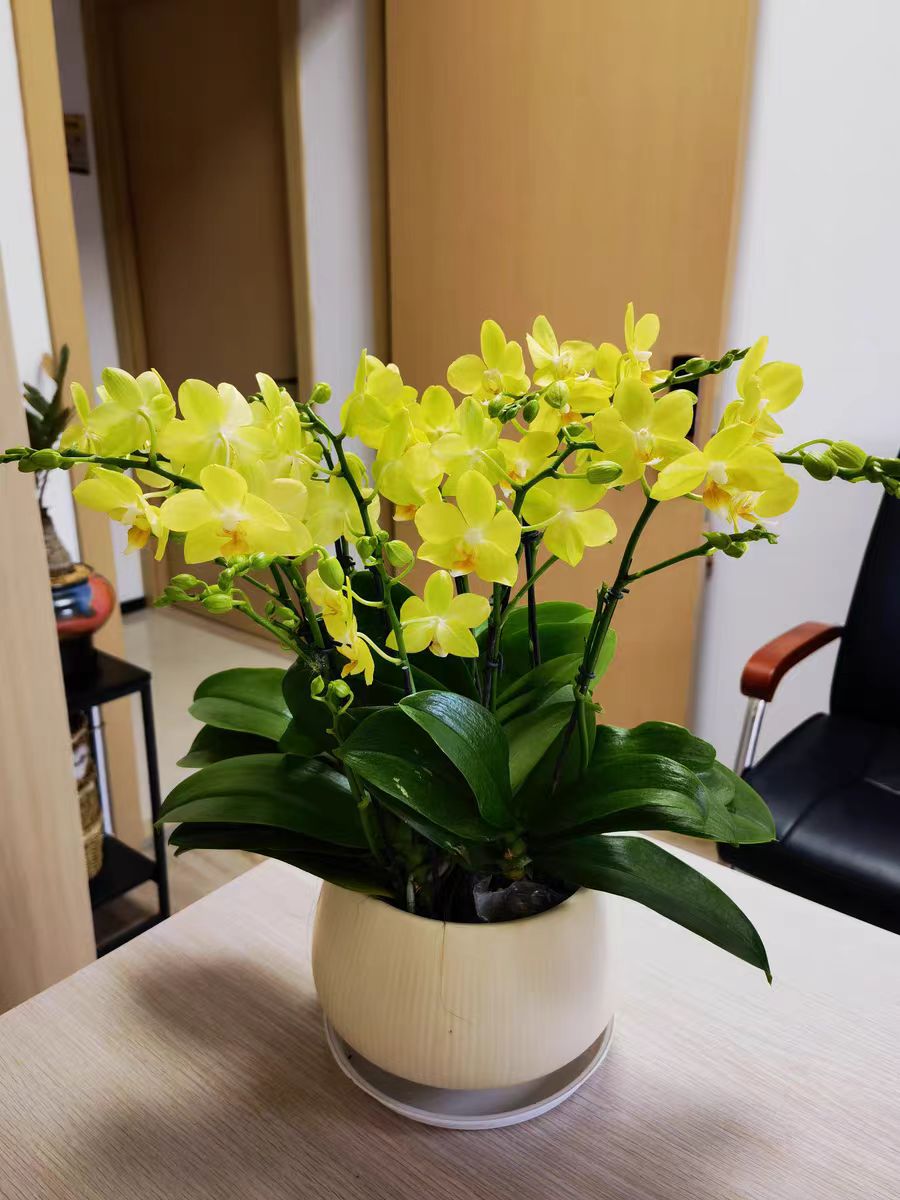The flowers of Jasminum sambac 'Grand Duke of Tuscany' are huge and have a beautiful flower shape, being a beautiful sight in summer. Although its blooming period is relatively short, each flower can bring endless surprises and joys. Before the blooming period arrives, Jasminum sambac 'Grand Duke of Tuscany' will gradually grow flower buds. These flower buds are small and exquisite, like little green beads. As time passes, the flower buds will slowly grow and finally bloom into beautiful flowers.
The blooming period of Jasminum sambac 'Grand Duke of Tuscany' is usually in summer. Generally speaking, from June to September is the season when Jasminum sambac 'Grand Duke of Tuscany' is in full bloom. During this period, Jasminum sambac 'Grand Duke of Tuscany' will bloom snow-white flowers. The petals are layered on top of each other, just like a small lotus throne, emitting a rich fragrance.
During the blooming period of Jasminum sambac 'Grand Duke of Tuscany', we can place it in a place with sufficient sunlight and good ventilation to let it fully enjoy the bath of sunlight. At the same time, pay attention to keeping the soil moist but not overly wet to avoid affecting the growth and blooming of the flowers. In addition, you can appropriately fertilize Jasminum sambac 'Grand Duke of Tuscany' to provide sufficient nutrients and prolong the blooming period.
After Jasminum sambac 'Grand Duke of Tuscany' blooms, proper pruning is very necessary. This can not only keep the plant beautiful but also promote the growth of new branches and the differentiation of flower buds, preparing for the next blooming.
After Jasminum sambac 'Grand Duke of Tuscany' blooms, it is best to prune within one week after the flowers wither. At this time, the growth state of the plant is relatively stable, and it can recover growth more quickly after pruning. When pruning, choose sharp scissors or pruning shears. This can ensure that the pruning cut is flat and reduce damage to the plant. At the same time, disinfect the pruning tools to avoid pathogen infection.
First, cut off the withered flowers. You can cut them off from the base of the flower with scissors. Be careful not to damage the surrounding leaves and branches. Cutting off the remaining flowers can avoid the flowers from rotting and affecting the health of the plant. In addition to cutting off the remaining flowers, you can also prune some overly long, overly dense, and weak branches. For overly long branches, you can cut them short appropriately to maintain the beautiful shape of the plant.
Overly dense branches will affect ventilation and lighting and are prone to pests and diseases, so they need to be thinned. Weak branches should be cut off in time to avoid affecting the growth of the entire plant. During the pruning process, you can shape and prune Jasminum sambac 'Grand Duke of Tuscany' according to your own preferences. You can trim the plant into shapes such as a sphere or a tower to increase its ornamental value. But be careful not to over-prune to avoid affecting the growth and blooming of the plant.
After pruning, appropriately reduce the frequency of watering. Because the pruned plant needs a certain amount of time to recover growth, too much water may cause root rot. But don't let the soil be too dry. Keep the soil slightly moist. After pruning, you can apply a thin liquid fertilizer to Jasminum sambac 'Grand Duke of Tuscany' to provide sufficient nutrients and promote the growth of new branches.
Proper pruning after Jasminum sambac 'Grand Duke of Tuscany' blooms can make the plant more beautiful and is also beneficial for the next blooming. During the pruning process, pay attention to choosing the right time and tools, using the correct pruning method, and doing a good job in post-pruning maintenance.
In which season does the blooming period of Jasminum sambac 'Grand Duke of Tuscany' usually occur?

Share with
Tagged in :




Leave a Reply